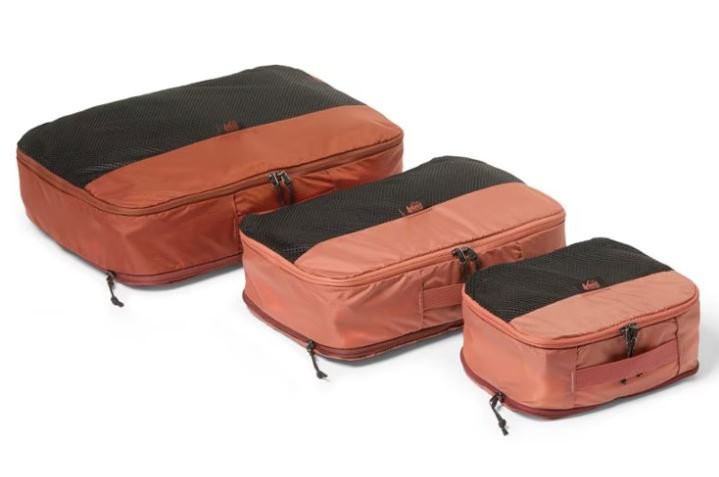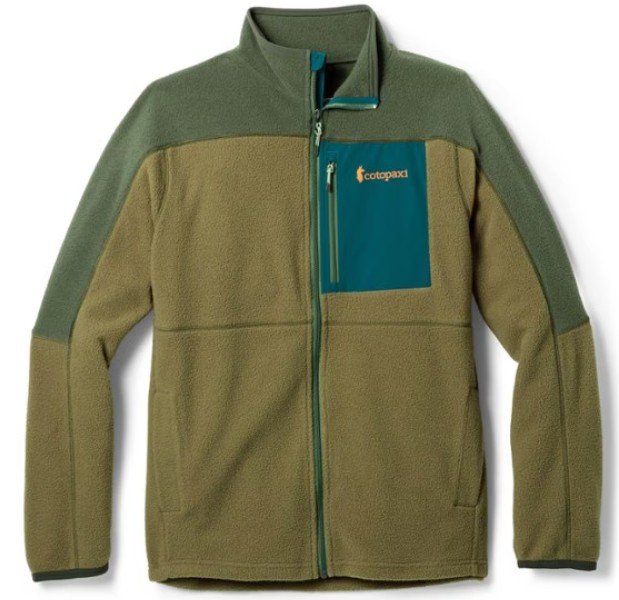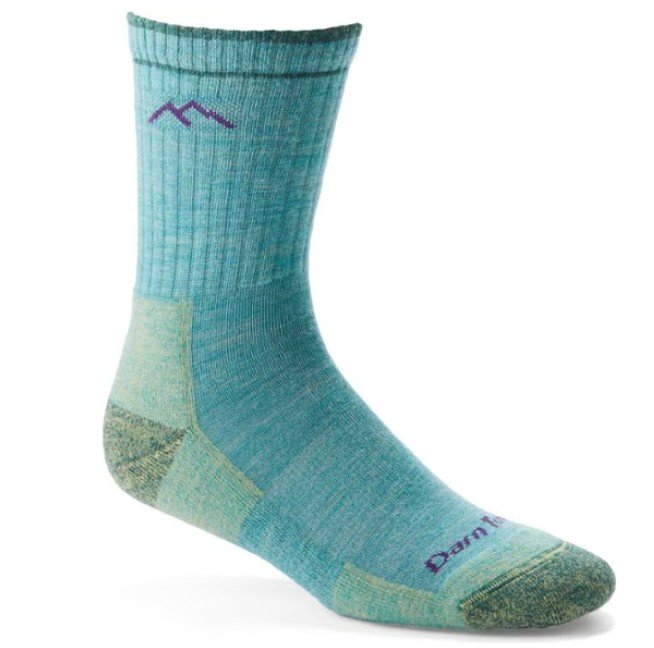What to Pack for an African Safari-Clothing Edition (2025)with strict weight limits
Let’s face it—packing for any big trip can feel overwhelming. But when your journey includes dusty game drives, sudden changes in temperature, and a flight on a tiny bush plane? Things get a little more complicated. An African safari is one of those unforgettable, once-in-a-lifetime adventures for so many people that it becomes the trickiest part of the trip to prepare for—especially if you're not sure what to expect out in the wild. While the thought of seeing elephants stroll past your tent or lions basking in the golden grass is thrilling, figuring out what to bring (and what to leave behind) can cause more stress than excitement. It took us a few safari trips to different parts of the world to get close to our set packing list.
What adds to the confusion is that I always overpack and Shay always goes minimal ( as years of travelling for work has made her just carry the essentials). If it is a city trip or to a location which has access to some shops, either way will work as you can get what you left behind or have bigger luggage weight limits to bring all the stuff you may need. But when you go on an African safari you need to be prepared just right. This becomes even more critical when you have to take small planes with a 15 /20 kg limit per person ( including carry on). With countless game drives and a few bush plane flights under our belts, we have acquired exactly what works for us when we are traveling light and heading deep into the African wilderness.
Your safari packing priorities should center around four things: comfort, function, weather, and weight. Our way of thinking is that African Safari is about being present—watching wildlife, listening to the sounds of the bush, soaking in the sunrise and sunset, and winding down beside a fire under the stars. The fewer things you have to manage, the more immersed you can be in the experience. This is a 3 part series covering Clothes, Gear (coming soon) and Accessories and other tips (coming soon).
“ This post contains affiliate links. If you click through and make a purchase, we may earn a small commission at no extra cost to you which helps support this blog. Thank you!”
Total Weight
Luggage
Luggage restrictions are serious—especially on bush planes. While international flights tend to have generous baggage allowances ( compared to African safari flights), things change once you're flying between safari camps. Small planes operate under strict weight limits, often ranging between 33 and 44 pounds (15–20 kg) per person—including both your checked bag and carry-on. Some East African countries lean toward the lower end, while destinations like South Africa may offer slightly more wiggle room. But it’s not just about weight. The type and shape of your bag matter too. Of Course you can get around it by purchasing another seat in the plane but that adds quite a bit of cost as well sometimes becomes hard to accommodate as there are very few seats in these planes. Hard-shell suitcases are usually a no-go. Since the luggage compartments on these planes are tiny, oddly shaped, and require bags that can squish and flex into place. A soft-sided duffel without wheels is the best bet. And always double-check your safari operator’s or airline’s guidelines before you pack.
Checked Luggae
Generally the maximum size allowed is 27 inch x 14 inch x 12 inch for checked luggage. Both of the lightweight and roomy duffel should mentioned below hold everything you need, and it is compliant with most African airline requirements, but please check with your travel operator. There are soft sided wheeled duffle bags , but some flights don’t allow any rigid side and it adds extra weight with the only advantage being you can pull it around in the commercial airports. Since it has limited application we ignored those kinds of bags.
Eagle Creek No Matter What Duffel
At $69, this bag is an affordable option with an empty weight of just under two pounds , backed by the proven performance and a warranty promise of Eagle Creek. We use this bag when we have a slightly higher load limit or have lesser equipment load. As this bag is 24 inch x 12 inch x11 inch it is on the smaller side but can take more repeated beating. If you want another option,
Dimayar 65L travel duffle bag
At $20. The bag is cheaper as well as ½ the empty weight at 0.9 lbs. This one is not as sturdy for frequent use but at 24 inch x 11 inch x 13 inch it is ideal for the job. We also keep this as an additional bag when ever we travel to accommodate if we go on a chocolate and coffee buying binge. This zips up in a small pouch. Comes in different colors as well. The 85L option gives you more space but is just outside some size limits, but being a soft sided bag it might not matter.
Carry on Luggae
For carry-on luggage the maximum weight is 5 kgs. (11 lbs.) and it is generally accepted to be a backpack.
Osprey Tempest 20 Women's Hiking Backpack
This is a must for all our trips . It doubles as a personal item in commercial aircraft and helps us keep all our small access for sunscreen and mosquito repellent to bigger items like binoculars and tablets. It has rain cover which comes extremely handy. weighing in at around 2 lbs. ( 1 kg) this bag is work beast and can take a beating. Ours have lasted over 10 years and is still going strong. Comes in different colors as well. This a Shay’s bag that she can’t part with in any trip.
Lowepro Flipside 500 AW II Camera Backpack
This is our main backpack to carry all the photography/video equipment including the laptop. This is a carry-on in commercial flight but becomes checked in bush planes. It can take at least 2 full frame bodies along with a 400/500 mm prime lens as well as 3-4 other small lens. It has a inbuilt rain cover which comes in handy along with a tripod mount on front. I am a big fan of the flipside design as it keeps the main opening against your back and away from wandering hands in crowded area. At 2 kgs. (4.4 lbs. ) its one of the lightest ones around with enough padding to protect your expensive gear
For more details on what camera equipment and other accessories fits in and how please click on our part II of packing here.
Packing Cube
If there’s one travel hack we use regardless of the destination, it’s the magic of packing cubes and compression packs. These simple tools completely transform the way you pack—and travel. Packing cubes help keep your clothes neatly separated and easy to find, whether you're living out of a backpack or rolling suitcase. No more frantic digging or messy piles. Compression packs are a lifesaver for those of us who tend to overpack. They reduce bulk by squeezing air out of your clothes, freeing up precious space without leaving anything behind. Once you try them, it’s hard to imagine traveling without them.
Clothing
One of the biggest hurdles is that Social media makes us believe that we will need multiple outfits per day to get the perfect picture. Of Course it can be done if you have an unlimited budget and are not carrying photography equipment which is more than 50% of your overall weight limit. The truth? You’ll spend most of your time in open vehicles, on walking safaris, or relaxing at camp—not at formal dinners or social events and you will get dirty and ragged. Many safari lodges provide laundry service with fast turnaround, so you can repeat outfits without worry. The best approach to safari clothing is to focus on practicality, comfort, and layering. Early morning game drives can be surprisingly cold, especially in open-sided vehicles. But by mid-morning, as the sun rises higher, temperatures can soar. You’ll be shedding and reapplying layers throughout the day. Then, as the sun dips below the horizon, the chill returns.
Safari Shirt
When it comes to safari gear, nothing beats a good safari shirt. Lightweight, breathable, and built for long days in the sun in the dusty environment of Africa or the humid jungles in south America and Asia. With features like roll-up sleeves, vented backs, and quick-dry fabric, they keep you cool and comfortable Added advantage are buttoned pockets? Perfect for stashing a field guide or map, lip balm, snack, spare batteries and cards. If you are going in the dry season then good old cotton shirts and tops work as well. These REI Co-op Sahara long sleeve shirt has been our work horse for more than 10 years.
Base Layer
A good base layer is the unsung hero of outdoor adventures. Worn close to the skin, it regulates your body temperature, wicks away sweat, and keeps you dry whether you're climbing a mountain or navigating a chilly morning trail. The beauty of a quality base layer lies in its versatility—it keeps you warm in the cold and cool when you're working up a sweat. Lightweight, breathable, and often made from technical synthetics like polyester, it’s the foundation of any smart layering system. Trust me, once you’ve tried a proper base layer, cotton tees just won’t cut it anymore. These lightweight base layers from REI works amazingly with the safari shirt and the fleece in the chilly African morning to keep you warm and sweat free in the late morning when the sun is hot and you shed the fleece.
Fleece
A fleece might not be the first thing you think to pack for an African safari, but trust me—it earns its spot in your bag. Early morning game drives can be surprisingly chilly, especially in open vehicles or high-altitude areas. A lightweight fleece offers just the right amount of warmth without adding bulk, and it's easy to layer over a safari shirt and a base. Breathable, soft, and quick to dry, it’s the kind of cozy essential you’ll be glad to have when the savanna sunrise greets you with a crisp breeze. Both the Cotopaxi and REI Co-op ones have been a staple in our luggage when we need to shed it quickly after the few hours in the morning.
Rain Jackets/Wind Breakers
Having a light jacket which doubles as a windbreaker makes a big difference. During the dry season it can be used as another layer to bundle up against the chilly windy ride in an open safari jeep and in the shoulder season it handles the occasional downpour that you might get trapped in. While it may be tempting to wear your boldest, most colorful gear for the photos, muted tones like khaki, olive, beige, and taupe are actually better suited for blending into the landscape—and for keeping biting insects like tsetse flies at bay. We always go with a lightweight version for the rain jacket for the shoulder and dry season.
Pants
You don’t need to buy special safari pant’s—regular chinos, leggings, or even shorts ( not recommended if you are a bug magnet like us) usually work just fine. We recommend avoiding jeans since they tend to be bulky and not ideal for packing. That said, if you’re excited to really embrace the safari vibe, you might consider hiking pants like the ones below. Since you will be seating most of the time it is good to get some pants that you are comfortable in. They work as full-length pants in the cool mornings and can easily roll up into capris when the sun comes out, but even on warm days, we appreciated having the option for long pants to protect from the harsh sun and especially when the mosquitoes come out in the evening. For our tip on “how to avoid bug bites if your a magnet to them” please read part III of this series.
Underwear
Almost all lodges offer laundry services—sometimes even at no extra charge. We have read that due to cultural customs in some remote regions, they may not handle women’s underwear. Whether this is true or not we don’t know as we prefer to hand wash them when the need arises. We generally pack enough underwear to last us for up to 9 days ( which is most of our safari trips).For this we only trust one brand Ex Officio for the last 10 years. Their underwear’s keep you dry, supported, and chafe-free, even after whole day in the safari vehicle. They are also easy to rinse and air-dry because of their fast-drying fabrics, making them a reliable choice when you're doing your own laundry on the go.
Socks
Merino wool socks are a must-have for any African safari. These socks are lightweight yet incredibly insulating, keeping your feet cool when the temperature rises and warm when it drops. Merino wool’s natural moisture-wicking properties help prevent sweat buildup, keeping your feet dry and blister-free during long hours on the move. Plus, they are odor-resistant, which means fewer worries about stink during those multi-day safaris. Whether you're trekking through the bush or relaxing between game drives, merino wool socks are the perfect combination of comfort and performance for your any safari adventures.
Shoes
Unless you're mountain hiking in Uganda/Rwanda for gorillas or going on a walking safari—most safaris are pretty relaxed affairs. You'll spend the majority of your time seated in a safari jeep, slowly cruising through national parks or private reserves in search of wildlife. Because of this, there’s really no need to pack bulky hiking boots. You’ll likely only hop out of the vehicle occasionally for short walks or rest stops. Any trail lightweight trail running slip-on shoes works great. They're easy to take off inside the vehicle, breathable, and don’t take up much space in your luggage. Plus, if they get dusty, you can just rinse them off. Since we are little more adventurous and do like to explore the bush whenever possible we choose to go with our tried and tested Moab 3 waterproof hiking shoes from Merrell.
Hats
Spending long hours under the intense African sun calls for smart protection, and a good hat tops the list. A simple baseball cap can offer relief by shielding your eyes and face, helping you concentrate on those unforgettable safari moments—whether it’s a herd of wildebeest on the move or a lion lounging in the grass. For better coverage many seasoned safari-goers prefer a wide-brimmed hat , but we think it impedes your vision specifically if you are trying to keep an look out for the avian variety as well. For the cold mornings and evening don’t forget to pack a fleece or woolen beanie.















































